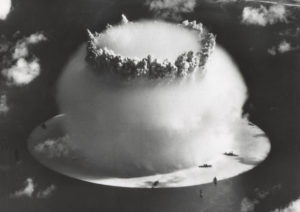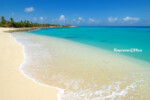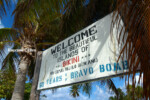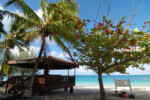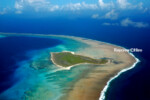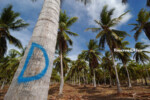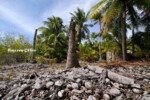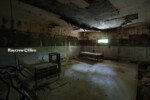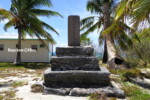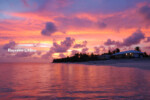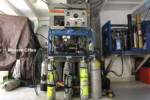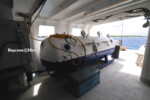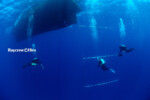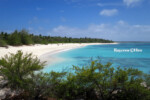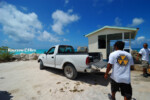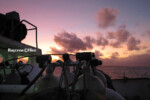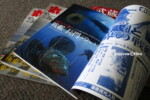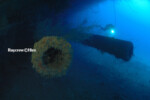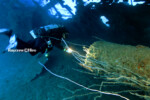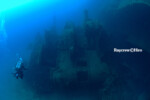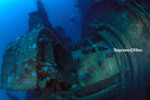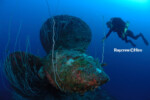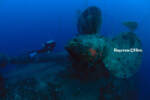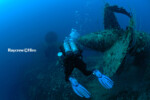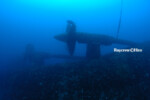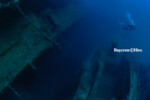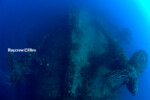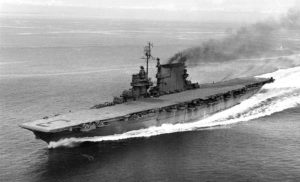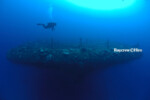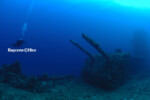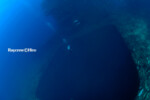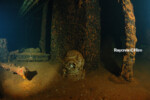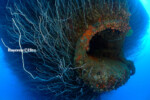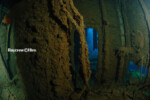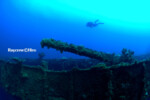BIKINI ATOLL
Lagoon area: 229.40 sq miles
Land area: 2.32 sq miles
Bikini Air port: Enyu Island
Main Island: Bikini Island
The site chosen for the explosive tests was Bikini Atoll. During 1946, following the end of WWII, the USA gathered together a “mock” naval fleet in order to test the effects of atomic bombs on the large fleet. After the displacement of the local inhabitants, 67 nuclear tests were carried out from 1946 to 1958, including the explosion of the first H-bomb (1952). Bikini Atoll has conserved direct tangible evidence that is highly significant in conveying the power of the nuclear tests, i.e. the sunken ships sent to the bottom of the lagoon by the tests in 1946 and the gigantic Bravo crater. Equivalent to 7,000 times the force of the Hiroshima bomb, the tests had major consequences on the geology and natural environment of Bikini Atoll and on the health of those who were exposed to radiation. Through its history, the atoll symbolises the dawn of the nuclear age, despite its paradoxical image of peace and of earthly paradise. This is the first site from the Marshall Islands to be inscribed on the World Heritage List 01 August 2010.
Around the same time French fashion designer Louis Reard was looking for a name for his new, controversial, tiny swimsuit design and the “Bikini” was launched. Bikini Lagoon became the final resting place for some of the most significant warships in history. Bikini Atoll was opened for diving in 1996 allowing divers to experience some of the most historic and amazing wreck diving in the world.
BIKINI ATOLL NUCLEAR TARGET FLEET
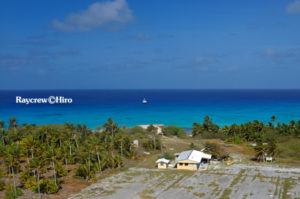 Carriers
Carriers
USS SARATOGA (CV-32), USS Independence (CVL-22)
Battleship
HIJMS NAGATO, USS Arkansas (BB-33), USS Nevada (BB-36), USS New York (BB-34), USS Pennsylvania (BB-38)
Cruisers
IJN Sakawa, Prinz Eugen, USS Pensacola (CA-24), USS Salt Lake City (CA-25)
Destroyers
USS Lamson (DD-367), USS Anderson (DD-411), USS Conyngham (DD-371), USS Mugford (DD-389), USS RalphTalbot (DD-390), USS Mayrant (DD-402), USS Trippe (DD-403), USS Rhind (DD-404), USS Stack (DD-406), USS Wilson (DD-408), USS Hughes (DD-410), USS Mustin (DD-413), USS Wainwright (DD-419)
Submarines
USS Apogon (SS-308), USS Pilotfish (SS-386), USS Skipjack (SS-184), USS Searaven (SS-196), USS Tuna (SS-203) and more..
Attack Transports
USS Gilliam (APA-57), USS Carlisle (APA-69) and more..
HIJMS NAGATO
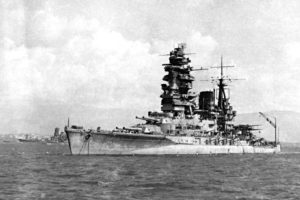 Displacement: 42,850 ton
Displacement: 42,850 ton
Length: 738 ft (224.94 m)
Beam: 113 ft 6 in (34.6 m)
Draft: 31 ft 2 in (9.5 m)
Propulsion: Geared Turbines, 4 Shafts, 8000 hp
Speed: 26.5 knts
Range: 8,650 Nmiles @ 16 knots
Armament: 4×Twin 16.1″(41 cm) guns, 18×Single 14 cm guns, 4×Twin 127 mm (5 in)/40 DP guns, 98×25 mm anti aircraft guns
The massive 16.1-inch.45 caliber guns mounted on HIJMS NAGATO could fire a remarkable distance of more than 30 km.
On August 30, 1945, following the Japanese surrender, Nagato, the last surviving Japanese battleship, was boarded and secured by American sailors from USS Horase A. Bass. In March 1946 she was taken to Bikini Atoll for operation Crossroads, a series of atomic bomb tests. She was in such poor repair that on the way she had to be towed to Enewetok Atoll for emergency repairs.
In the first test (ABLE, an airburst) on July 01, 1946 she was 1,640 yards from ground zero and was not severely damaged. In the second test (BAKER, an underwater explosion) on July 25, 1946 she was severely damaged, eventually capsized sank five days later.
DIVING: Lying completely upside down hull accessible from right side of wreck as you swim towards the bow (Port side access)
Bridge broken off and intact on sand
Stern guns accessible, Bow guns also accessible (end caps on them), Top of hull 112.2 ft (32 m), Bottom 178.2 ft (54 m)
USS SARATOGA (CV-3)
Displacement: 43,055 ton
Length: 888 ft (270.7 m)
Beam: 106 ft (32.3 m)
Draft: 30 ft 5 in (9.3 m)
Propulsion: 4 set turbo electric, 4 Shafts
Speed: 33.25 knts
Range: 10,000 Nmiles @ 10 knots
Armament: 4×twin 8″ guns, 12×single 5″ guns anti aircraft
Aircraft carried: 78
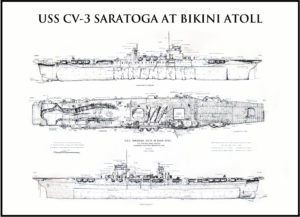 Lexington-class aircraft carrier — She survived the Test Able blast, an air burst on 1 July 1946 at Bikini Atoll, with only minor damage, but was damaged beyond repair by the Test Baker blast on 25 July 1946, an underwater atom bomb blast which was detonated under LSM-60 500 metres (500 yards) from the carrier. Salvage efforts were prevented by radioactivity, and seven-and-one-half hours after the blast, with her funnel collapsed across her deck, Saratoga slipped, stern first, beneath the surface of Bikini Lagoon.
Lexington-class aircraft carrier — She survived the Test Able blast, an air burst on 1 July 1946 at Bikini Atoll, with only minor damage, but was damaged beyond repair by the Test Baker blast on 25 July 1946, an underwater atom bomb blast which was detonated under LSM-60 500 metres (500 yards) from the carrier. Salvage efforts were prevented by radioactivity, and seven-and-one-half hours after the blast, with her funnel collapsed across her deck, Saratoga slipped, stern first, beneath the surface of Bikini Lagoon.
DIVING: It is sinking on the sand as it is. Torpedo bomber [Grumman TBF Avenger] is sinking with bomb on the sand near Saratoga. Penetration is also possible, but it divides into several times. Hangar elevator hall accessible, Top of bridge 56 ft (17 m), Guns on the deck 82.5 ft (25 m), Top of deck 89 ft (27 m), Bottom 171.6 ft (52 m)

